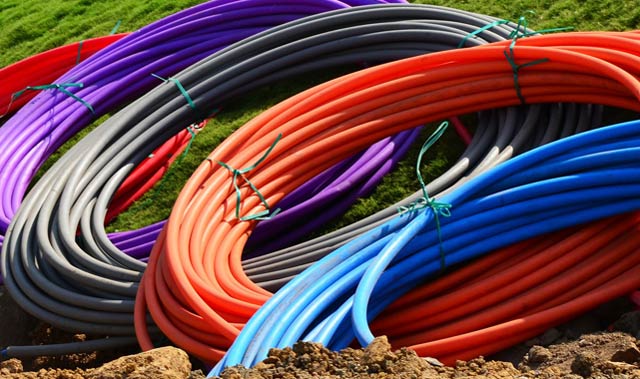 I was on a flight — my tenth or twelfth of the year, I forget — so I missed the president’s state of the nation address. In it, the word “broadband” was mentioned only twice, roughly about the same number of mentions it garners every year.
I was on a flight — my tenth or twelfth of the year, I forget — so I missed the president’s state of the nation address. In it, the word “broadband” was mentioned only twice, roughly about the same number of mentions it garners every year.
“Government,” we were told, “will fast track the implementation of the first phase of broadband roll-out to connect more than 5 000 government facilities in eight district municipalities over a three-year period… Funding to the tune of R740m over a three-year period has been allocated in this regard.”
That there was zero movement from 2015 — which marked “the beginning of the first phase of broadband roll-out” to connect these facilities — is utterly predictable.
It’s troubling that the state of the nation address is our only legitimate update on government’s broadband policy, named South Africa Connect, adopted by cabinet in December 2013. (Even the minister’s annual budget speech is low on detail.)
After more than two years, the department (of telecommunications & postal services, in case you’re wondering where this policy fits in) this weekend finally announced the connection of the first of the eight districts to receive free Wi-Fi, the Dr Kenneth Kaunda District Municipality in the North West (which includes the Matlosana (Klerksdorp), Tlokwe (Potchefstroom), Maquassi Hills and Ventersdorp municipalities).
Remember that in 2015, we were surprised by the president’s proclamation that Telkom was designated “as the lead agency to assist with broadband roll-out”. Telkom has not yet been officially awarded the project, which raises questions on how this first district municipality was connected (and who did so), and how the budgeted amount of R200m (of the R740m) has been spent in the 2015/2016 year.
Rivals have, according to Business Times, rightfully called for the project to go to tender. Business Times also cites a Bloomberg report from earlier this month, which said: “Telkom was close to sealing a deal with the government, saying it had already ‘carried out site inspections and studied how to implement the plan in eight districts’.”
Regardless of who does the work, this number (and the broader amount allocated for the three-year period, needs to be seen in context: R740m is laughable.
Telkom spends over R4bn/year on capital expenditure. Neotel, with a comparatively tiny network, spends over R500m. Vodacom and MTN will burn through close to R10bn each. Dark Fibre Africa owns fibre network rings in the major metros and 21 smaller metros, including East London, Polokwane, Tlokwe, Emalahleni and George. Nearly a year ago — as at 31 March 2015 — its network covered a total distance of 8 353km, and the book value of its fibre was “in excess of R5bn”.
Government’s R200m/year is a drop in the ocean.
TechCentral editor Duncan McLeod argued following the state of the nation address that he doesn’t “think it’s a bad thing that government isn’t committing tens of billions of rand in taxpayers’ money to build a state-led telecoms network similar to Australia’s hopelessly over-ambitious and highly controversial National Broadband Network. For one thing, we’re not Australia — we simply cannot afford it. South Africa does not have the money.”

He’s right.
Government should not be spending money it doesn’t have on trenching fibre. Its expensive distraction (vanity project?) Broadband Infraco is in need of a bailout from treasury to enable it to continue operating. Quite why both it and Telkom are operating national (and international) backhaul networks is downright bizarre. The only hope is that Infraco is one of those state-owned enterprises to be phased out as they “are no longer relevant to our development agenda”.
German model
McLeod points to the German model “where, in exchange for receiving access to radio frequency spectrum for 4G broadband, mobile operators first had to build high-quality coverage in the rural and under-serviced parts of that country. Only then could they use the spectrum in the cities.”
It really is that simple.
Mobile operators cannot do any more. Because of spectrum limitations, LTE services often remain 4G in name only. The process of licensing ultra-valuable spectrum (800MHz and 2,6GHz) remains stunted. And the pile of unused, “returned” spectrum continues to grow.
License both bands at, say, R1bn to operators (and to anyone who wants access to it). This will provide a nice boost to the fiscus (which desperately needs it).
As part of the licensing, ensure that operators connect rural towns and cities to fibre against aggressive — but fair — targets. For every X-dozen smaller towns or Y-thousand kilometres of fibre, operators would be able to use the newly acquired spectrum in Z major metros. And the operators don’t have to each go at it alone. That’s the beauty of fibre. You need only trench once for all operators, and there’s already precedent for this with MTN, Neotel and Vodacom working together to build a national backhaul network. Expand on this.
Let national treasury have oversight of this process (neither the regulator, Icasa, nor the department(s) responsible for “communications” are capable, I’d argue). Plus, operators have proved rather deft at putting one over regulators in the past.
There are ways, too, of government having access to a national fibre network without having to own one. Perhaps it has a “99-year lease” to capacity on this newly expanded network? Or it relies on a cost-plus formula to buy access? Or the best price wins?
Let’s move beyond this obsession with having to own a national fibre network. We don’t need it. We can’t afford it. The private sector can, and should be incentivised (correctly) to connect South Africa. All government need do, ideally through a central agency like Sita or — here’s a thought — Telkom, is provide free connectivity and free Wi-Fi on top. It’s amazing what free, fast connectivity can do for things like entrepreneurship and economic growth. Just ask Project Isizwe (or the OECD).
- Hilton Tarrant works at immedia
- This piece was published on Moneyweb and is used here with permission




